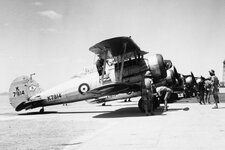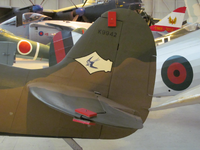Hi all,
I'm doing a bit of research at the moment and I'm stumped on information regarding a backing symbol for some early RAF tail markings. The marking consists of a white shape with a black outline, and then some rendition of the Squadron's emblem inside, it seems several squadrons used this shape, but I can't find a shared origin for it, would anyone be able to help? I see it most frequently on Gladiators, to me it's always looked like a spearhead or fountain pen nib but I'm not too sure.
Thanks for your time -
I'm doing a bit of research at the moment and I'm stumped on information regarding a backing symbol for some early RAF tail markings. The marking consists of a white shape with a black outline, and then some rendition of the Squadron's emblem inside, it seems several squadrons used this shape, but I can't find a shared origin for it, would anyone be able to help? I see it most frequently on Gladiators, to me it's always looked like a spearhead or fountain pen nib but I'm not too sure.
Thanks for your time -



